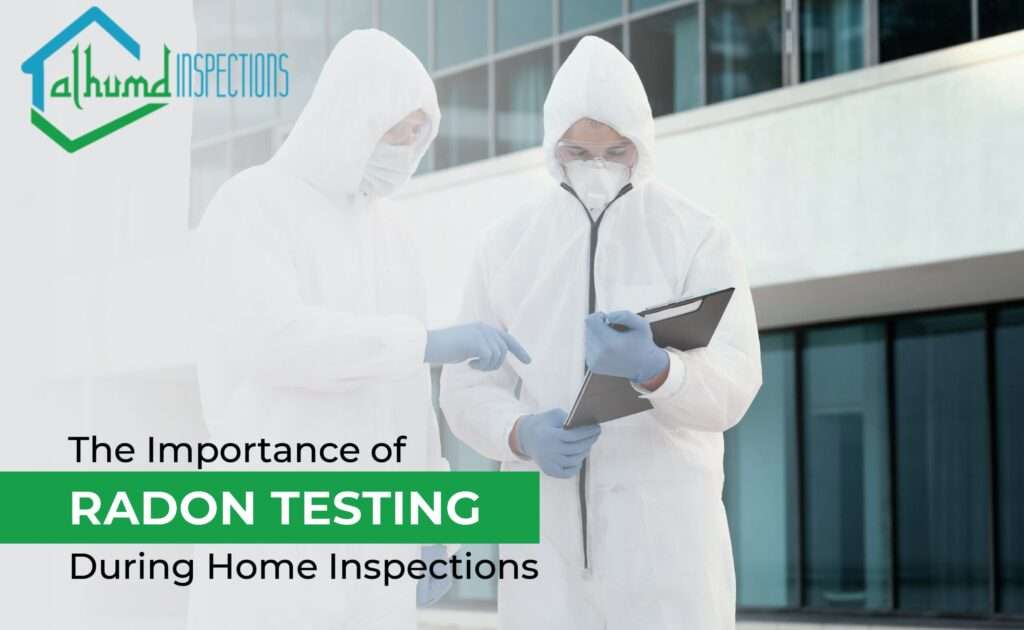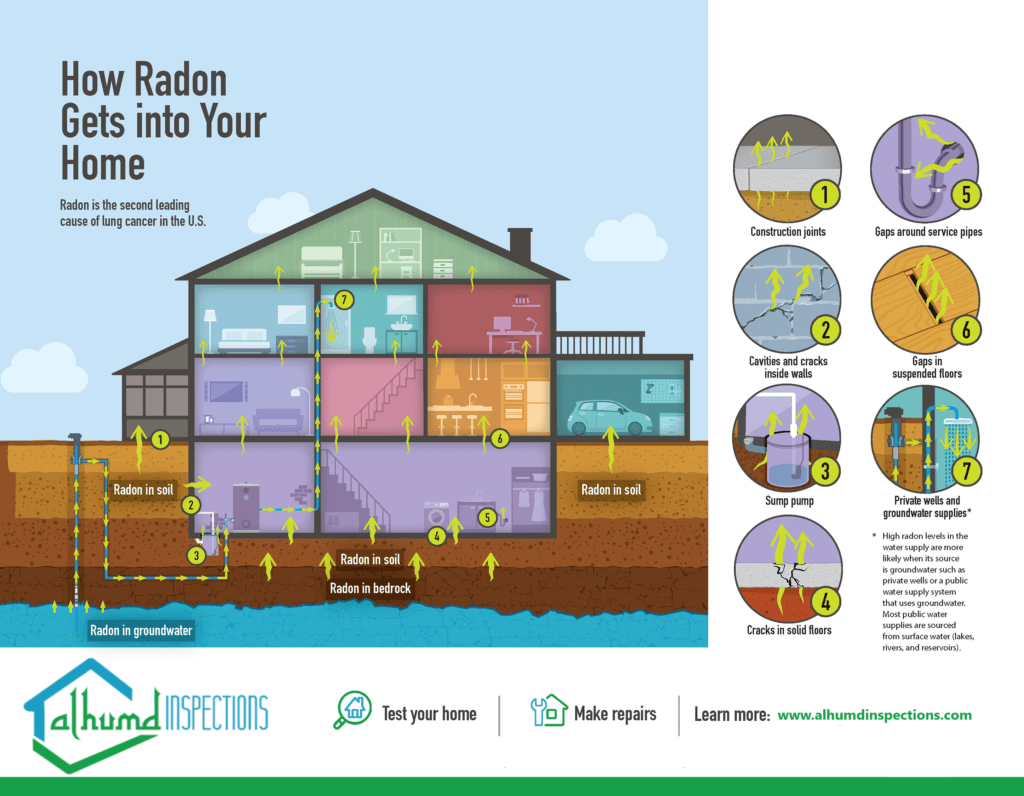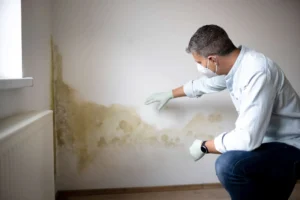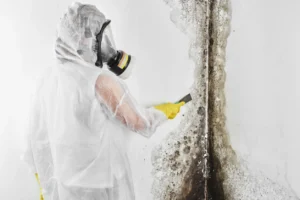Welcome to Alhumd Inspections
Experienced Radon Inspection Services
Done 2000 Plus Radon Inspections in Maryland Baltimore
Discover Peace of Mind with Alhumd Inspections Radon Inspection Services Your Premier Home Inspector!
Use Promo Code “SELFSCHEDULE” and get an $20 discount.
The Critical Need for Radon Inspection Services in Maryland and Washington D.C.
What is Radon?
Radon is a naturally occurring, invisible, and odorless radioactive gas that results from the decay of uranium found in soil and rock. It can enter homes through cracks in floors, walls, and foundations, and accumulate to high levels. The health implications of radon are significant; it is the second leading cause of lung cancer after smoking, as per the EPA. The risks it poses to home safety are not to be underestimated, and prolonged exposure can lead to serious health issues.

Local Expertise in Radon Inspection Services
Our radon inspection services offer professional testing to ensure the safety of homes in Maryland and Washington D.C. Understanding the radon risks is essential, and our certified inspectors are equipped with the expertise and tools to accurately assess radon levels in your home.
By leveraging our radon inspection services, homeowners can take proactive steps to protect their families from the invisible dangers of radon. Contact us today to schedule a radon test and ensure that your home remains a safe haven from radon risks.
Our certified inspectors in Maryland use state-of-the-art equipment to accurately measure radon levels, delivering results you can rely on. We understand the local landscape and how it affects radon concentration, ensuring tailored solutions that fit your specific needs.
The Importance of Radon Testing for Residential Properties
Radon levels vary greatly depending on geography and the construction of your home. In Maryland and Washington D.C., the presence of radon in homes can be a common concern due to the local geology. This makes radon testing an essential step in ensuring the safety of your living environment. Testing is the only way to ascertain the radon levels in your home, as its undetectable nature means it can’t be sensed by smell or taste.
Residential properties, both new and old, can harbor high levels of radon — and without proper testing, there’s no reliable way to detect its presence. Radon testing should be a routine part of home maintenance, especially in regions like Maryland and Washington, D.C., where elevated radon levels have been found in many homes exceeding the EPA’s action threshold. Homeowners across Baltimore, Montgomery County, Howard County, and Frederick County are particularly encouraged to test regularly. It’s a vital health safeguard that offers peace of mind and helps ensure timely action to reduce radon levels when necessary.

What is Radon Testing (Maryland and Washington D.C).: Ensuring Home Safety
Insight into Professional Radon Detection
Radon testing is a meticulous process that requires expertise, especially in areas like Maryland and D.C., where radon can be prevalent due to regional geological features. Professional radon detection involves deploying advanced testing devices in the lowest livable area of the home, as radon levels are typically highest at this point.
Choose Radon Inspection Services
Start by selecting from our wide range of home inspection services tailored to meet your specific needs, ensuring a thorough evaluation of your future home.
Select Your Date and Time
Convenience is key in the home-buying process. Choose the date and time that works best for you. Plus, enjoy a $20 discount when you schedule your inspection online, or feel free to give us a call to arrange your appointment.
Same-Day Delivery Report
After your inspection, expect to receive a detailed, digital report on the same day. Our modern, user-friendly reports provide you with all the information you need to make informed decisions about your investment.
How to test for Radon?
Advanced Continuous Radon Monitoring with the 1028 XP™
At Alhumd Inspections, we exclusively utilize the 1028 XP™ – the most advanced monitor on the market – to provide you with the most reliable and versatile radon testing service in theMaryland and Washington D.C. area.
About the 1028 XP™
The 1028 XP™ by SunRADON is at the forefront of radon detection technology, offering solid-state detection capabilities that our team trusts for its reliability and accuracy. This cutting-edge device revolutionizes the way we monitor radon levels, providing precise and continuous readings that you can depend on.
Key Benefits of Choosing Alhumd Inspections
Certified Accuracy: The 1028 XP™ is NRPP, C-NRPP, and NRSB certified, meeting the highest standards for radon measurement. Environmental Sensing: The ability to plug-and-play upgrade with environmental sensors means more data and better insights into the conditions that affect radon levels.
Protecting Your Health: Understanding and Preventing Radon Exposure
Radon exposure is a silent but significant health risk, especially in enclosed spaces where it can accumulate to dangerous levels. At Alhumd Inspections, we prioritize your health by providing comprehensive information on the risks associated with radon and the most effective prevention strategies.
The Health Risks of Radon Exposure
Radon is a carcinogenic gas that has been found to increase the risk of lung cancer significantly. As an odorless, tasteless, and invisible gas, it can enter homes undetected, exposing residents to its harmful effects. Long-term exposure to radon is the second leading cause of lung cancer after smoking and the leading cause among non-smokers, according to the EPA.
The danger of radon lies in its radioactive particles, which, when inhaled, damage the lining of the lungs. This damage can lead to lung cancer over time. The risk is compounded for smokers and is higher in areas with dense radium in the soil, such as Maryland and Washington D.C.
Strategies for Radon Exposure Prevention
Reducing radon levels in your home is key to minimizing health risks. Alhumd Inspections recommends the following preventative measures:
Professional Radon Testing: Engage our services for accurate radon level assessment in your home with the advanced 1028 XP™ continuous monitoring system.
Sealing Cracks and Openings: Seal your floors and walls, especially if your property is older, to prevent radon from seeping in from the ground.
Proper Ventilation: Ensure that your home, particularly the basement and ground floors, is well-ventilated to disperse radon gas.
Radon Mitigation Systems: Consider installing a radon mitigation system, which can significantly reduce radon levels in the home. By taking these steps, you can greatly decrease the radon levels in your environment and protect yourself and your family from the potential health risks associated with radon exposure.
Alhumd Radon Inspection Company Achievement
Home Radon Test Preparation: A Comprehensive Checklist for Homeowners
To ensure the most accurate results from your radon inspection, there are several steps you can take to prepare your home. Alhumd Inspections provides this checklist to help homeowners in the Maryland and Washington D.C. area get ready for our team’s arrival.
Before the Radon Inspection Team Arrives
Close Windows and Doors: Keep all windows and doors closed 12 hours before and during the testing period, except for normal entry and exit. Maintain Normal Heating/Cooling Patterns: Do not alter your thermostat settings; keep the temperature consistent for accurate readings. Avoid Using Fans or Devices That Increase Air Flow: Large fans or ventilation systems not part of your HVAC system should be turned off as they can affect radon levels.
Provide Access: Ensure that the testing area, typically the lowest lived-in level of the home, is accessible and that any crawl spaces or substructures can be entered by the inspection team.
Household Conditions That Can Affect Radon Levels
Certain conditions within your home can influence radon levels:
High Humidity: Moisture in your home can skew radon test results. Use dehumidifiers to manage high humidity levels, especially in basements.
Air Pressure: Significant differences in air pressure between the inside and outside of your home can affect radon levels. Make sure your home is as airtight as possible.
Soil Changes: Recent soil disruption around your property, such as landscaping or construction, can release radon gases into your home.
By following this radon inspection checklist and preparing for radon inspection appropriately, you can help ensure that the radon testing process goes smoothly and that
you receive the most reliable results.
Navigating Your Radon Inspection Report: Analysis and Action Steps

Understanding Action Levels
The EPA has set action levels to help homeowners understand when it’s necessary to take steps to reduce radon levels: 2 pCi/L – 3.9 pCi/L: While this range is below the EPA’s recommended action level, some homeowners may still choose to consider mitigation measures to improve indoor air quality.
4 pCi/L and Above: This is the level at which the EPA recommends taking action to reduce radon levels, as prolonged exposure increases the risk of lung cancer.
Creating Your Radon Action Plan
If your radon levels are at or above the action level:
Verify the Results: If you conducted a short-term test, follow up with a long-term test to confirm radon levels.
Consult a Professional: Engage with a radon mitigation specialist to discuss the best course of action for your home.
Mitigation: Implementing a radon mitigation system can significantly reduce radon levels.
Post-Mitigation Testing: After mitigation measures are in place, test again to ensure the effectiveness of the reduction methods. By thoroughly understanding your radon inspection report and the necessary action levels, you can make informed decisions to protect your property and the health of its occupants.
Don’t hesitate to reach out to professionals for a deeper radon report analysis and to help you establish a comprehensive radon action plan.
A Quick Radon Inspection Report: Analysis and Action Steps
Understanding your radon inspection report is critical in ensuring the safety of your environment. Here’s a guide to help you through the process of radon report analysis, deciphering radon levels, and deciding on a radon action plan for your property.
Interpreting the Radon Inspection Report
Your radon inspection report provides a detailed account of radon levels in your home. Here’s what to look for:
Radon Concentration Levels: This is usually measured in picocuries per liter (pCi/L) and will be the focal point of the report.
Testing Conditions: Review the testing conditions to confirm they match the state of your home during the testing period.
Methodology: Understand the type of test conducted, whether it’s short-term or long-term, as this can affect the action you take.

Alhumd Inspection FAQs About Radon Inspections
When the search for a & Radon Inspection Near Me & leads you to our door, you’ve found the local experts committed to ensuring the safety and integrity of your living space. We are a team of trusted professionals providing comprehensive radon inspections in the Maryland and D.C. area, dedicated to helping you maintain a healthy home environment. Our certified inspectors use state-of-the-art equipment to accurately measure radon levels, delivering results you can rely on. We understand the local landscape and how it affects radon concentration, ensuring tailored solutions that fit your specific needs.
Our Radon Inspection Process Includes:
Consultation: Understanding your concerns and answering any questions about radon
inspection.
Timely Service: We offer prompt scheduling to ensure that your radon testing is done at your earliest convenience.
Expertise at Work: Our team conducts a thorough assessment of your property using the latest techniques for precise radon measurement.
Detailed Reporting: Receive a comprehensive report that’s easy to understand, with findings
clearly explained.
Follow-Up Support: Should your radon levels be above the EPA action level, we’ll guide you through the next steps and provide mitigation support.
Local Knowledge: Having serviced the Maryland and D.C. area for years, we understand the regional radon trends and risks.
Quality Assurance: We stand by the accuracy of our inspections and are proud of our reputation for reliability and professionalism.
Customer Satisfaction: Ensuring your peace of mind is our top priority, and we’re committed to clear communication and comprehensive service.
So, if you’re wondering where to find a radon inspection service nearby, look no further. Contact us today and join the multitude of homeowners who trust us to protect their homes from radon. Your search for a Radon Inspection Near Me & ends with the assurance of quality service and expert advice.
Understanding the essentials of radon testing is crucial for maintaining a healthy indoor environment in your home. Radon testing is a specialized process used to determine the level of radon, a naturally occurring radioactive gas, within indoor spaces. Since radon is colorless, odorless, and tasteless, testing is the only way to detect its presence and assess potential risks to your health.
Radon is the leading cause of lung cancer among non-smokers and the second leading cause for smokers. Elevated radon levels have been found in homes in every state, making radon testing an important step no matter where you live. The Environmental Protection Agency (EPA) and the Surgeon General strongly recommend testing all homes below the third floor for radon.
Radon testing can be done using two main methods: short-term and long-term testing kits. Short-term tests remain in your home for a period ranging from a few days to 90 days, depending on the device. Long-term tests, which give a more accurate representation of the average year-round radon levels, are left in place for over 90 days.
Testing for radon is recommended:
When purchasing a new home. After moving into a new home and every two years thereafter. After significant renovations that might change the airflow in your house. When there are changes in living patterns that could influence radon levels, such as a change from part-time to full-time occupancy.
What to Do If Radon Levels Are High
If your radon test results return at or above the action level of 4 picocuries per liter (pCi/L), it is advised to take steps to reduce radon levels. This typically involves installing a radon mitigation system, which is a service we provide. After mitigation, it’s important to conduct another radon test to ensure the system is effectively reducing the radon concentration. Testing for radon is an easy and essential process to ensure the safety of your home. Don’t let radon go undetected. Take action and get your home tested.
We provide radon testing services throughout Maryland, serving homeowners and property managers in Baltimore, Montgomery County, Howard County, and Frederick County. Our certified inspectors use advanced testing methods to detect and measure radon levels accurately, ensuring your home meets safety standards and remains a healthy environment for your family.
Alhumd Radon Testing Reviews: Hear from Our Customers
Trustindex verifies that the original source of the review is Google. Ahmed is very knowledgeable and talks you through everything he is doing. Does an initial review with you and provides details. Recommend his services to everyone needing a home inspection.Posted onTrustindex verifies that the original source of the review is Google. Ahmed is thorough and explains everything throughout the inspection process. He is transparent and honest. The report was broken down and easy to understand. I would recommend him. As a first time homeowner, having Ahmed walk us through the inspection process is a breath of fresh air and gives us confidence that we are making the right choice and gives up peace of mind.Posted onTrustindex verifies that the original source of the review is Google. Ahmed was a pleasure to work with. He was very professional and punctual. We received our inspection very quickly and it was really informative. I would definitely recommend him to anyone needing an inspection for their property.Posted onTrustindex verifies that the original source of the review is Google. Ahmed did a fabulous job during the condo inspection. He is efficient, clear in his explanations, and sent me the report right away. Highly recommend!Posted onTrustindex verifies that the original source of the review is Google. Excellent service and modern tech driven services. Very satisfied. Ahmad is really thorough and took time to do the perfect inspection.Posted onTrustindex verifies that the original source of the review is Google. Ahmed was friendly, professional, and thorough in his inspection. He was very knowledgeable and answered all my questions. As a first time homebuyer, I feel very comfortable and confident moving forward with the information Ahmed provided. I'm glad I chose to work with him and definitely recommend!Posted onTrustindex verifies that the original source of the review is Google. Ahmed is truly amazing! He was thorough and meticulous in completing our home inspection. He took the time to answer all of our questions and explained in detail any areas of concern. The drone feature he used was quite impressive and provided a full view of the state of our roof. We are delighted with his service and would recommend him 100%.Posted onTrustindex verifies that the original source of the review is Google. The inspection was very detailed covering every area of the house. Ahmed gave us the opportunity to ask questions along the way. He explained everything we needed to know and gave us the appropriate recommendations to follow. The drone was a plus to inspect the roof. Recommend Ahmed 100%Posted onTrustindex verifies that the original source of the review is Google. I had a great experience with Alhumd inspections. They were extremely thorough and efficient. I Plan to continue working with Alhumd for future inspections.
Our Radon inspections Service Area
Read Alhumd Radon Inspection Service Blog & Article
Discover the Newest Findings from Alhumd Inspections: Must-Read Updates from Your Reliable Radon Inspection Home Service Firm.



